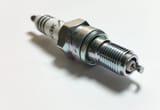>>937890042 (OP)
What you will need:
A tire gauge.
A valve core remover.
A manual bicycle tire pump.
A bottle of water.
A small funnel (must fit in a valve stem).
This will require a little bit of luck or at the very least patience. You will want to do this when the car is parked in such a way that one of the front wheels is oriented with the valve stem near the bottom, facing upward. If it is all the way at the bottom, this may or may not work. If it is at like a 22° angle up from bottom dead center, that's probably better.
You will need plenty of time to execute this operation so either the car must be somewhere very isolated where no one will walk up on you and/or this must be done at night.
First, use the tire gauge to note how much air is in the tire. It will probably be around 30 to 35 PSI or whatever communist unit equivalent you may use in your country. Once you have noted the tire pressure, use your valve core remover to remove the core of the valve stem. Be very mindful that the sudden outrush of air doesn't blow the core out of your hand. You will need it later.
Once the air has forcefully evacuated from the tire, take the funnel and pour the water in. Once you have poured the entire contents of the bottle (however big it is) or it begins overflowing and you can't pour anymore in, use the core tool to put the core back into the valve stem.
Now take the bicycle pump and start pumping. You will be there awhile.
Once the tire seems fairly firm, use the tire gauge to ensure that the tire is back to its original pressure. Your work is done.
The driver of the car will be none the wiser that anything has happened to their tire since it will be back to its original pressure. However, they will notice a horrible vibration as they drive and the water that is now inside their tire is thrown around like a centrifuge.













